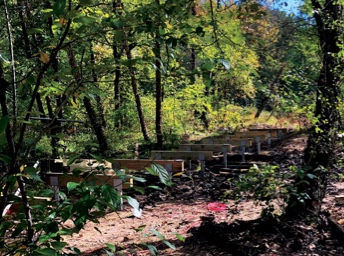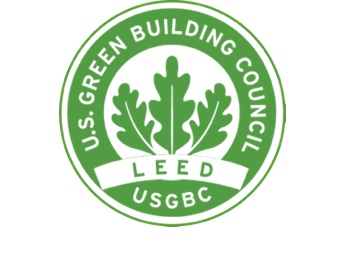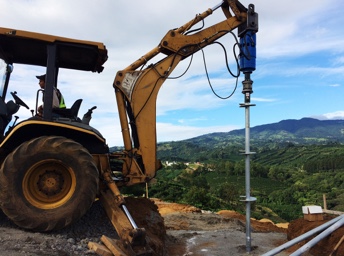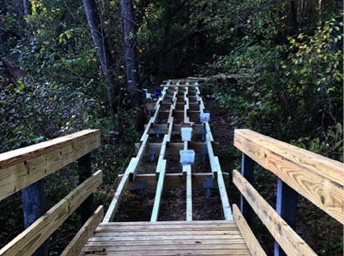Green Building Foundations
Hubbell's commitment to incorporate social responsibility and sustainability initiatives has been a vital part of our business model for years. The green building market continues to grow and is changing the way commercial projects are evaluated.

Sustainable Foundation Solutions
Not only can helical pile foundations be used to support green technology such as solar panel and wind turbine foundations, helical piles themselves are also a green building choice.
Helical piles are a popular choice for environmentally sensitive areas, such as marine ecosystems and park trails, because they are installed with small installation equipment and do little to disturb the surrounding soil. Helical piles let us enjoy an undisturbed environment by walking above the ground on a boardwalk trail!
Our commitment to sustainability encompasses the material we use, the cost on the environment to transport it, and how our product is installed. Read more about the holistic sustainability of CHANCE helical piles.

LEED
The U.S. Green Building Council (USGBC) developed LEED (Leadership in Energy and Environmental Design) to encourage green building around the world. While much of the focus for LEED points is focused on the building’s shell and HVAC systems, valuable points can be achieved by using helical piles for a building’s foundation.
Helical piles are removable, reusable and made from steel which is a highly recyclable metal. For all of these reasons, helical piles lend themselves to various LEED credit categories.

Helical Piles
Here are some of the areas to consider when looking for credits specific to material selection:
- LEED BD+C, Materials and Resources – Sourcing of Raw Materials
- LEED BD+C, Materials and Resources – Environmental Product Declarations
Another area to consider for LEED points is based on the ability for helical piles to be installed in small areas with minimal access and installation footprint. More information relating to this category can be found under:
- LEED BD+C, Materials and Resources - Building Life Cycle Impact Reduction, Option 1 Maintain Existing Structural Elements
- As well as potential inclusion in the Option 2 Whole-Building Life-Cycle Assessment

Materials & Installation
Reuse of existing material can also help drive LEED credits in other categories. There are also a number of other LEED categories not directly related to foundations BUT can be influenced by considering helical piles for building and structure foundations.
Significant LEED points are available for reusing existing structures of a building. The ability for helical piles to be installed in small areas with minimal access and installation footprint provide a possible solution for shoring of existing building structural elements for reuse. More information relating to this category can be found under:
- LEED BD+C, Materials and Resources - Building Life Cycle Impact Reduction, Options 1, 2, 3 and 4.
The low soil disturbance (no spoils), ease of installation and flexibility of application of helical piles could influence site selection and help a job qualify for LEED points. Refer to below sections to consider design alternatives that would use helical piles:
- LEED BD+C, Sustainable Sites – Protect or Restore Habitat
- LEED BD+C, Sustainable Sites – Construction Activity Pollution Prevention
- LEED BD+C, Sustainable Sites – Open Space
- LEED BD+C, Location and Transportation – High Priority Site and Equitable Development
- LEED BD+C, Location and Transportation – Sensitive Land Protection